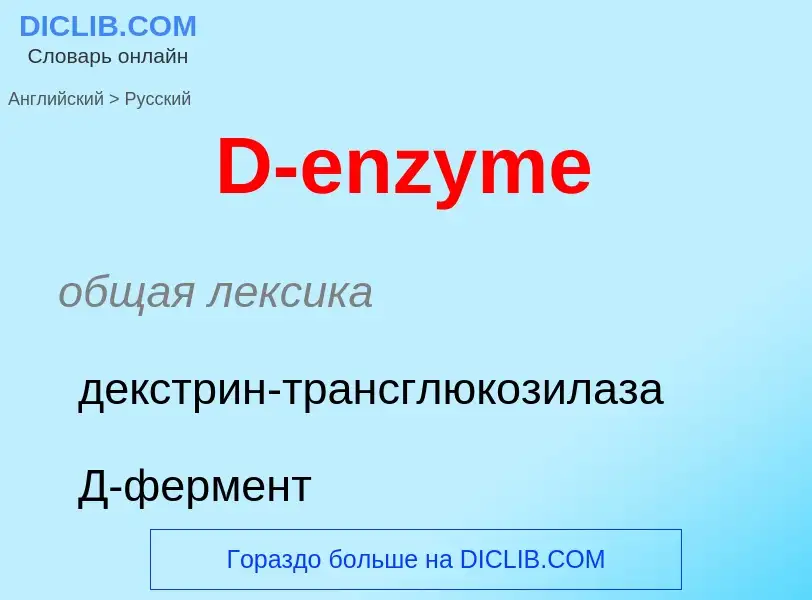Перевод и анализ слов искусственным интеллектом ChatGPT
На этой странице Вы можете получить подробный анализ слова или словосочетания, произведенный с помощью лучшей на сегодняшний день технологии искусственного интеллекта:
- как употребляется слово
- частота употребления
- используется оно чаще в устной или письменной речи
- варианты перевода слова
- примеры употребления (несколько фраз с переводом)
- этимология
D-enzyme - перевод на русский
общая лексика
декстрин-трансглюкозилаза
Д-фермент
диспропорционирующий фермент
[enzai'mætik]
общая лексика
ферментативный
медицина
ферментный
энзиматический
прилагательное
общая лексика
ферментативный
энзимный
['enzaim]
общая лексика
фермент
энзим
медицина
зимаза
существительное
общая лексика
энзим
фермент
энзим, фермент
Определение
Википедия
The Enzyme Commission number (EC number) is a numerical classification scheme for enzymes, based on the chemical reactions they catalyze. As a system of enzyme nomenclature, every EC number is associated with a recommended name for the corresponding enzyme-catalyzed reaction.
EC numbers do not specify enzymes but enzyme-catalyzed reactions. If different enzymes (for instance from different organisms) catalyze the same reaction, then they receive the same EC number. Furthermore, through convergent evolution, completely different protein folds can catalyze an identical reaction (these are sometimes called non-homologous isofunctional enzymes) and therefore would be assigned the same EC number. By contrast, UniProt identifiers uniquely specify a protein by its amino acid sequence.


![recessive]] fashion because the enzymes from the unaffected genes are generally sufficient to prevent symptoms in carriers. recessive]] fashion because the enzymes from the unaffected genes are generally sufficient to prevent symptoms in carriers.](https://commons.wikimedia.org/wiki/Special:FilePath/Autosomal recessive inheritance for affected enzyme.png?width=200)

